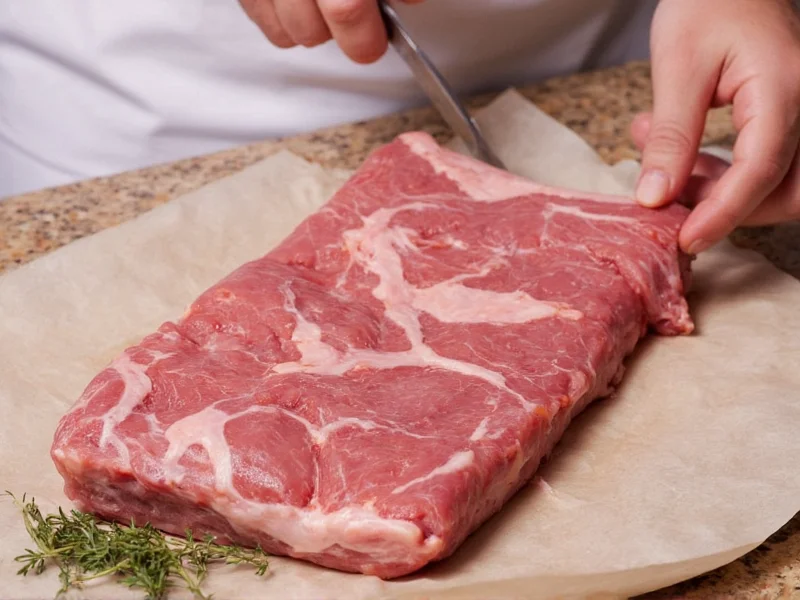Lamb's distinctive flavor requires thoughtful seasoning to enhance rather than mask its natural richness. Unlike other meats, lamb benefits from specific herb combinations and precise timing that complement its unique fatty acid profile. Understanding these fundamentals transforms ordinary preparations into exceptional dishes that showcase lamb's best qualities.
Understanding Lamb's Flavor Profile
Lamb contains higher levels of branched-chain fatty acids compared to other red meats, creating its characteristic 'gamey' flavor that many find appealing. This distinctive taste profile responds exceptionally well to certain seasoning approaches while being easily overwhelmed by others. The fat content in lamb—particularly in cuts like shoulder or leg—acts as a flavor carrier, making proper seasoning timing crucial for optimal results.
When considering how to season lamb meat properly, remember that different cuts require tailored approaches. Tender cuts like loin chops need simpler seasoning than tougher cuts like shank, which benefit from more robust flavor profiles and longer marinating times. The cooking method also influences your seasoning strategy—grilled lamb chops need different treatment than slow-roasted leg of lamb.
Essential Components of Effective Lamb Seasoning
Creating the perfect lamb seasoning involves balancing four key elements that work together to enhance rather than compete with the meat's natural flavors.
| Seasoning Component | Recommended Options | Application Timing |
|---|---|---|
| Salt | Kosher salt, sea salt | 45 min-24 hours before cooking |
| Herbs | Rosemary, thyme, oregano, mint | 30 min before cooking or during marinating |
| Spices | Garlic, cumin, coriander, paprika | During marinating or 15 min before cooking |
| Acid | Lemon juice, red wine vinegar | Immediately before cooking |
Classic Lamb Seasoning Combinations
Professional chefs rely on these time-tested combinations when seasoning lamb meat for different culinary traditions. Each profile enhances lamb's natural richness while adding distinctive character.
Mediterranean Style (Perfect for Leg of Lamb)
This traditional approach works exceptionally well for larger cuts. Combine 2 tablespoons olive oil with 4 crushed garlic cloves, 2 tablespoons fresh rosemary (chopped), 1 tablespoon fresh thyme, 1 teaspoon lemon zest, and 1½ teaspoons kosher salt. Massage this mixture under the fat cap and across the entire surface of the meat. For best results when seasoning leg of lamb, refrigerate uncovered for 12-24 hours before roasting.
Middle Eastern Inspired (Ideal for Chops and Ribs)
Create a flavorful dry rub with 1 tablespoon ground cumin, 2 teaspoons ground coriander, 1 teaspoon smoked paprika, 1 teaspoon sumac, 1½ teaspoons kosher salt, and ½ teaspoon black pepper. This simple lamb rub recipe works particularly well for grilling, as the spices create a beautiful crust without burning. Apply 30 minutes before cooking for optimal flavor penetration.
Simple Home Preparation (Great for Weeknight Meals)
For quick preparations like lamb chops or ground lamb, use this straightforward method: Pat meat dry, then apply ¾ teaspoon kosher salt per pound of meat. Let sit 45 minutes at room temperature. Just before cooking, add freshly cracked black pepper and a light sprinkle of dried oregano. This basic approach to seasoning lamb chops lets the meat's quality shine through without complicated steps.
Step-by-Step Seasoning Guide
Follow these professional techniques to maximize flavor when seasoning lamb meat:
- Dry the surface: Pat lamb thoroughly with paper towels—moisture prevents proper browning and seasoning adhesion
- Apply salt first: Use ¾ to 1 teaspoon kosher salt per pound, rubbing gently into the surface
- Refrigerate uncovered: For chops, 45-60 minutes; for roasts, 12-24 hours (the dry brine process enhances both flavor and texture)
- Add herbs and spices: 30 minutes before cooking, apply your chosen herb mixture, pressing gently to adhere
- Finish with acid: Just before cooking, add a light drizzle of lemon juice or vinegar to brighten flavors
Common Seasoning Mistakes to Avoid
Even experienced cooks make these errors when preparing lamb:
- Overpowering with strong spices: Avoid excessive use of potent spices like curry powder that mask lamb's distinctive flavor
- Seasoning too late: Salt needs time to penetrate; applying right before cooking only flavors the surface
- Ignoring acid balance: Lamb's richness benefits from brightening elements—always include some acid component
- Using dried rosemary exclusively: Fresh rosemary works better with lamb; dried can become bitter when cooked
- Not accounting for salt in other ingredients: If using soy sauce or capers in marinades, reduce added salt accordingly
Special Considerations for Different Cuts
Tailor your seasoning approach based on the specific lamb cut you're preparing:
- Lamb chops: Use lighter seasoning with emphasis on fresh herbs; avoid heavy spice rubs that can burn during quick cooking
- Leg of lamb: Benefits from deeper seasoning penetration; use wet marinades or extended dry brining
- Lamb shoulder: Stand up to bold flavors and longer marinating times (up to 48 hours) due to connective tissue
- Ground lamb: Incorporate seasonings thoroughly but avoid overmixing, which can make meat dense
When seasoning lamb for grilling specifically, reduce sugar content in rubs to prevent burning, and apply oil to the meat rather than the grill grates for better seasoning adherence. For roasted preparations, consider inserting herb bundles directly into slits in the meat for concentrated flavor pockets.











 浙公网安备
33010002000092号
浙公网安备
33010002000092号 浙B2-20120091-4
浙B2-20120091-4